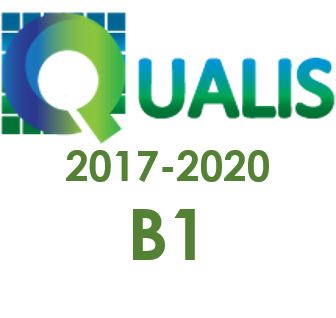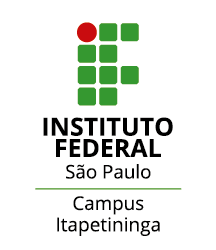Fotografia
um recurso para elaborar tarefas matemáticas fora da sala de aula
Palavras-chave:
Fotografia. Desenho de tarefas. Formulação de problemas. Resolução de problemas. Formação inicial de professoresResumo
A literatura refere que fotografar ao ar livre motiva os alunos para a aprendizagem/compreensão matemática. No entanto, não temos ainda conhecimento suficiente sobre como os futuros professores criam tarefas matemáticas em contextos da vida real. Neste artigo descreve-se um estudo onde futuros professores tiram fotos de elementos no ambiente fora da sala de aula que lhes permitam desenhar tarefas matemáticas. Os resultados sugerem que nas fotos foram privilegiados objetos relacionados com edifícios e mobilizados conteúdos de Geometria e Medida. Os participantes referiram que a experiência foi positiva, proporcionando-lhes um “olhar matemático” sobre os objetos, mais consciente, apesar de expressarem que desenhar tarefas de nível cognitivo elevado é difícil.
Downloads
Referências
ARCAVI, A. The role of visual representations in the learning of mathematics. Educational Studies in Mathematics, v. 52, n.3, p. 215-241. 2003.
BARBOSA, A.; VALE, I. Math trails: a resource for teaching and learning. In Gitirana, V.; Miyakawa, T.; Rafalska, M.; Soury-Lavergne; S.; Trouche L. (eds.) Proceedings of the Re(s)sources 2018 International Conference, Lyon: ENS de Lyon, p. 183-186, 2018.
BARNBAUM, B. The art of photography: An approach to personal expression. San Rafael, CA: Rockynook, 2010.
BRAGG, L.; NICOL, C. Seeing mathematics through a new lens: using photos in the mathematics classroom, Australian Mathematics Teacher, v. 67, n.3, p. 3-9. 2011.
BROWN, S.; WALTER, M. The art of problem posing. Mahwah, NJ: Erlbaum, 2005.
ERICKSON, F. (1986). Qualitative methods in research on teaching. In Wittrock, M. C. (ed.), Handbook of research on teaching. New York, NY: Macmillan, 1986. p. 119-161.
GODFREY, C. The Board of Education Circular on the Teaching of Geometry, Mathematical Gazette, v. 5, p. 195-200, 1910.
GUTSTEIN, E. Reading and Writing the World with Mathematics: Toward a Pedagogy for Social Justice. New York: Routledge, 2006.
KENDEROV, P.: REJALI, A.; BARTOLINI BUSSI, M.; PANDELIEVA, V.; RICHTER, K.; MASCHIETTO, M.; KADIJEVICH, D.; TAYLOR, P. Challenges Beyond the Classroom—Sources and Organizational Issues. In Barbeau, E; Taylor, P. (eds.), Challenging Mathematics In and Beyond the Classroom – New ICMI Study Series 12. Springer. 2009, p. 53-96.
LEIKIN, R. Exploring mathematical creativity using multiple solution tasks. In Leikin, R; Berman, A; Koichu, B. (eds.), Creativity in mathematics and the education of gifted students. Rotterdam, Netherlands: Sense Publishers. 2009, p. 129-145.
MEIER, A.; HANNULA, M.; TOIVANEN, M. Mathematics and outdoor photography experience – exploration of an approach to mathematical education, based on the theory of Dewey’s aesthetics, LUMAT. International Journal on Math, Science and Technology Education, v. 8, n. 2, p.146-166, 2018.
MUNAKATA, M.; VAIDYA, A. Encouraging creativity in mathematics and science through photography. Teaching Mathematics and its Applications, 31, 121-132, 2012.
NCTM. Principles to actions: ensuring mathematical success for all. Reston: NCTM, 2014
SILVER, E. Fostering creativity through instruction rich in mathematical problem solving and problem posing. ZDM, v. 29, n. 3, p. 75–80. 1997.
SMITH, M.; STEIN, M. K. Five practices for orchestrating productive mathematics discussions. Thousand Oaks, CA: Corwin Press, 2011.
STEWART, I. The Mathematical Maze: Seeing the world through mathematical eyes. Hoboken, NJ: Wiley, 1997.
STOYANOVA, E. Problem posing in mathematics classrooms. In McIntosh, A.; Ellerton, N. (eds.), Research in Mathematics Education: a contemporary perspective. Edith Cowan University: MASTEC. 1998, p. 164-185.
SULLIVAN, P.; LIBURN, P. Good questions for math teaching. Sausalito, CA: Math Solutions publications, 2002.
VALE, I.; BARBOSA, A. A fotografia na aula de matemática: uma experiência promotora de conexões. In AMADO, N., CANAVARRO, A.P., CARREIRA, S., TOMÁS FERREIRA, & VALE, I. (eds), Livro de Atas do EIEM 2019, Lisboa: SPIEM, 2019, p. 183-186.
VALE, I.; BARBOSA, A. Photography: a resource to capture outdoor Math. In LUDWIG, M; JABLONSKI, S; CALDEIRA, A.; MOURA, A. (eds) Research on Outdoor STEM Education in the digiTal Age. Proceedings of the ROSETA Online Conference, 2020a, p. 179-186. https://doi.org/10.37626/GA9783959871440.0.22
VALE, I.; BARBOSA, A. Photography outdoor: a resource in teacher training. In DONEVSKA-TODOROVA, A; FAGGIANO, E.; TRGALOVA, J.; LAVICZA, Z.; WEINHANDL, R.; CLARK-WILSON, A.; WEIGAND, H. (eds.), Mathematics Education in the digital Age (MEDA) – Proceedings. Linz: Linz School of Education, 2020b, p. 327-334.
VALE, I.; PIMENTEL, T; BARBOSA, A. The power of seeing in problem solving and creativity: an issue under discussion. In: AMADO, N., CARREIRA, S., JONES, K. (eds.), Broadening the scope of research on mathematical problem solving: A focus on technology, creativity and affect. Cham, CH: Springer. 2018. p. 243-272.
Downloads
Publicado
Como Citar
Edição
Seção
Licença
Copyright (c) 2021 Revista Internacional de Pesquisa em Didática das Ciências e Matemática

Este trabalho está licenciado sob uma licença Creative Commons Attribution-NonCommercial-ShareAlike 4.0 International License.




